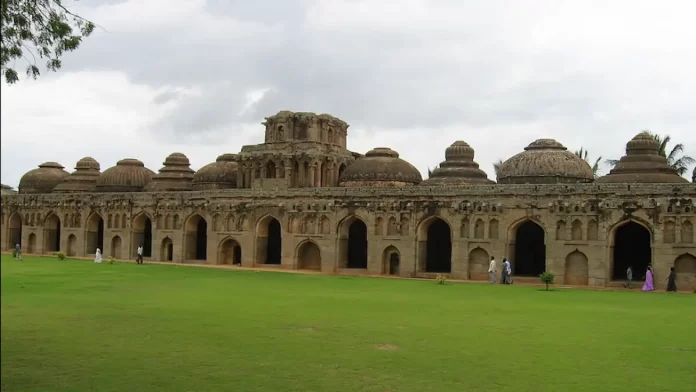The Vijayanagara Empire, which thrived in South India from the 14th to the 17th century, was renowned for its grandeur, architectural marvels, and vibrant cultural heritage.
Behind the empire’s prosperity and economic stability lay a well-organized and efficient taxation system.
The Vijayanagara rulers implemented a sophisticated revenue collection mechanism, which played a pivotal role in financing their ambitious infrastructure projects, military campaigns, and promoting trade and commerce.
In this article, we will delve into the taxation system of the Vijayanagara Empire and explore its key features and contributions to the empire’s economic success.
Key Elements of the Taxation System
- Land Revenue: Land revenue was the primary source of income for the Vijayanagara Empire. The agricultural sector formed the backbone of the economy, and farmers were required to pay a portion of their produce as taxes to the state. The revenue was typically collected in kind, such as cereals, grains, and other agricultural products. The system was designed to be equitable, ensuring that the taxes did not impose an undue burden on the farmers.
- Irrigation Taxes: The Vijayanagara rulers were pioneers in constructing a sophisticated irrigation system to enhance agricultural productivity. As a part of the taxation system, farmers using these irrigation facilities were required to pay a nominal irrigation tax, further contributing to the state’s coffers.
- Trade and Commerce Taxes: The Vijayanagara Empire was a bustling hub of trade and commerce, with merchants from different regions converging at the empire’s markets. The rulers levied taxes on goods traded within the empire, as well as on imports and exports. Ports like Hampi, Goa, and Mangalore served as vital centers for maritime trade, and taxes collected at these ports contributed significantly to the empire’s revenue.
- Professional Taxes: The Vijayanagara rulers imposed taxes on various professions and craftspeople, including weavers, blacksmiths, carpenters, and merchants. These professional taxes were designed to regulate trade activities and ensure fair practices while generating additional income for the state.
- Custom Duties: Custom duties were imposed on goods passing through the empire’s borders, especially at key trade routes and entry points. These duties were strategically utilized to control the flow of goods and generate revenue.
Administration of Taxation
The administration of the taxation system was meticulous and well-organized. Local administrative officials, known as “Amara-Nayakas” or “Nayakas,” were responsible for collecting taxes and ensuring compliance with tax laws.
The empire’s vast territory was divided into administrative units known as “Nadus” or “Desams,” each under the supervision of an efficient revenue officer.
The local revenue officials were entrusted with the task of assessing the land’s fertility, determining the appropriate tax rates, and collecting revenues.
Benefits and Contributions
The efficient taxation system of the Vijayanagara Empire had several notable benefits and contributions:
- Economic Stability: The steady revenue generated through the taxation system facilitated the empire’s economic stability, allowing the rulers to undertake ambitious construction projects, including temples, forts, and irrigation works.
- Encouragement of Trade and Commerce: The moderate trade and commerce taxes promoted a thriving commercial environment, attracting merchants from distant lands and enhancing the empire’s reputation as a prosperous trading hub.
- Agricultural Growth: The revenue collected from agricultural taxes and irrigation dues were reinvested in the development of irrigation systems, leading to increased agricultural productivity and food security.
- Infrastructure Development: The abundant revenue enabled the Vijayanagara rulers to build magnificent temples, palaces, and other architectural wonders that still stand as testament to the empire’s opulence and cultural heritage.
Conclusion
The taxation system of the Vijayanagara Empire was a testament to the rulers’ foresight and administrative prowess.
It provided a robust foundation for the empire’s economic prosperity, promoting trade, supporting agriculture, and fostering an environment conducive to growth and development.
The legacy of this well-organized taxation system lives on, standing as a testament to the empire’s brilliance and its enduring impact on the history of South India.
